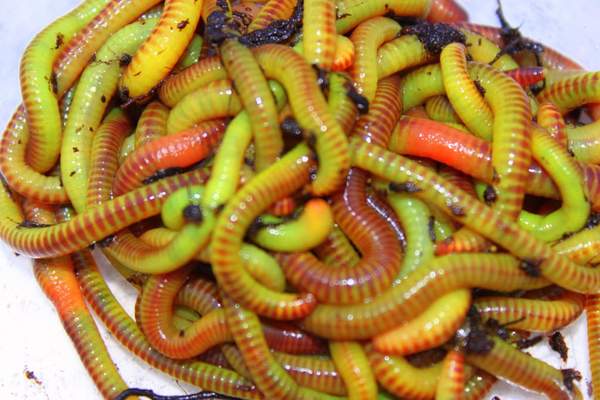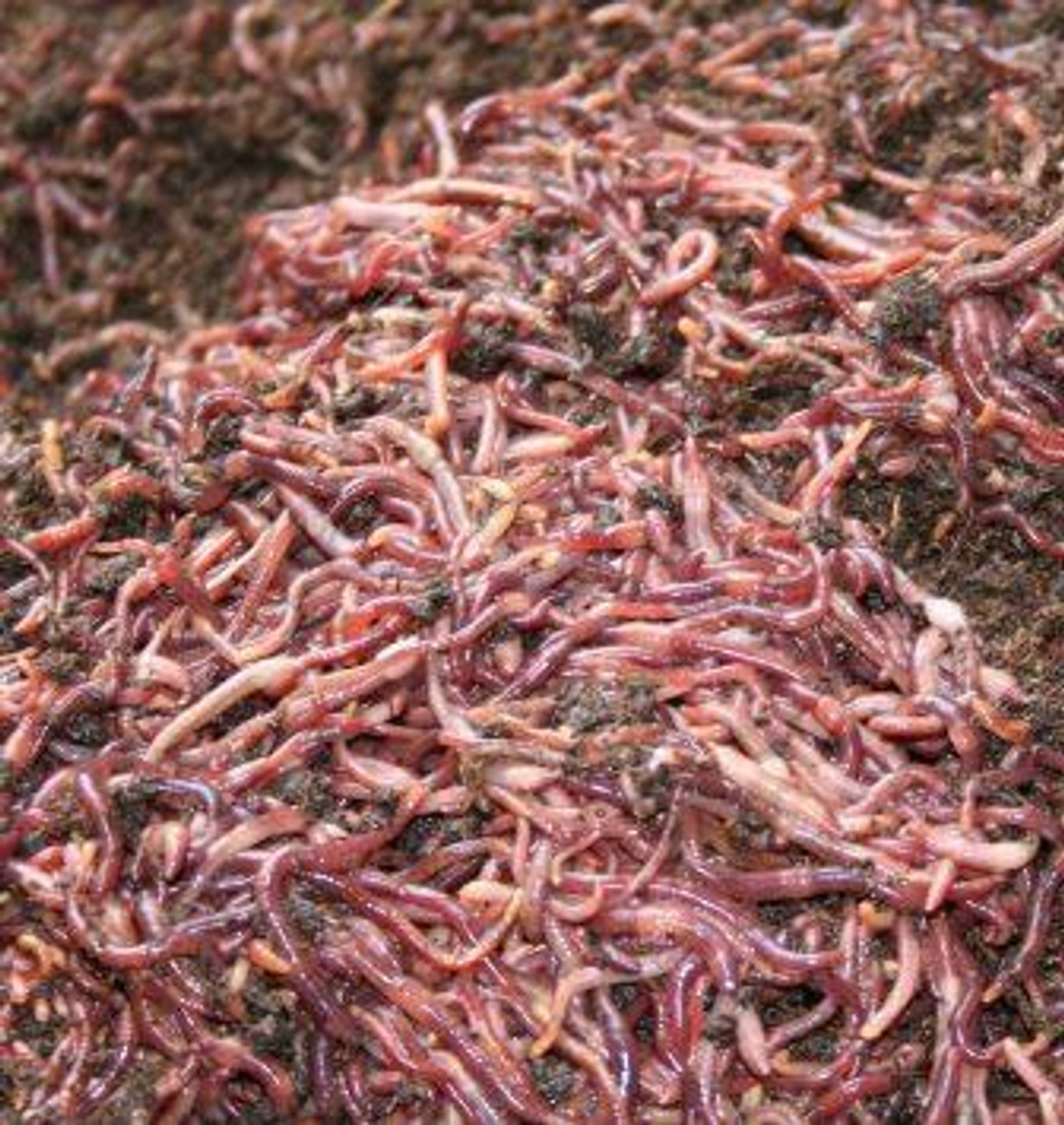10 Simple Techniques For Where To Find Red Wigglers
The Ultimate Guide To Where To Find Red Wigglers
Table of ContentsThe Basic Principles Of Where To Find Red Wigglers Not known Details About Where To Find Red Wigglers Some Known Incorrect Statements About Where To Find Red Wigglers The Buzz on Where To Find Red Wigglers6 Simple Techniques For Where To Find Red WigglersHow Where To Find Red Wigglers can Save You Time, Stress, and Money.
For ideal outcomes, you want to shoot for about 60-70% dampness level. At the best wetness levels which is just under 70% that handful must hardly yield one decline of fluid.
The Indian Blue is starved, yet likewise favors a warmer environment and it also exhibits a propensity to run away the bin. The red wiggler is a sturdy worm and isn't as particular regarding its climate. I like to call it the Ford Taurus of vermicomposting worms; you will not brag to your hardcore composting buddies that you own them, however they will offer you well.
Like any other lure, a worm's performance has involved rely on its presentation. H.G. "Faucet" Tapply emphasized this factor almost a half century earlier in among his Field & Stream columns. "A worm is such an unformed animal," he created, "there does not seem to be extremely a lot an angler can do with it other than jab it on a hook and throw it right into the water." However as Tap showed, a fishermen can do a good offer to make a worm a lot more attractive.
More About Where To Find Red Wigglers
I think you will certainly too if you attempt them. The smaller the trout stream, the much better worms work is an axiom that hasn't changed in the 100-plus years because Perry created his article. Anglers of his age just stuck their rickety fishing pole with alder tangles and went down a weighted worm right into a deep hole.
Early morning is prime feeding time, and the lightweight bait's slow descent leaves 5 inches of wriggling healthy protein in full sight for rather a while. After you've made the actors, maintain the bond open and put the rod in a forked stick. The line will diminish the rod in slow-moving loops as the worm settles, yet most of the time the slow-moving loopholes will certainly end up being a blur, and the morning will suddenly get instead intriguing.
You can fish deep and cover a great deal of territory, and the crawler appears to be the best touch for this transitional time, when the smallmouths have yet to secure on to a favored forage. Dark jigsblack, brownish, and purpleseem to match the nightcrawler's color. I normally utilize an entire 'spider, prefer marabou clothing, and go down the rod for two or 3 seconds when I get a hit.
If it's there, established the hook with a move instead than a jerk. As soon as in a while you'll find yourself hooked to those slow, hearty tugs, and feel the weight of a nice walleye.
The Basic Principles Of Where To Find Red Wigglers
When the heavy walleyes proceed to the big-water shoals in the late summertime, try going after them with a bucktail jig and a 1-inch pinch of nightcrawler. The bait covers the hook point, disperses weeds, and supplies a preference of victim. With absolutely nothing dangling or waving, it remains safe despite existing, casts, or enthusiastic panfish.
Whether you're wading or angling from a boat, wandering worms is among the terrific looking strategies for larger rivers. For trout, a spade-dug, 4-inch garden worm is the appropriate size; for bass, walleyes, and steelhead, a nightcrawler might be a much better option. The trick is to drift the bait with feeding and holding areas since fish in current are not mosting likely to go after down the lure, as they may in still water.
Fish the shifts: mouths of tributaries, bank-side slicks, and the edges of large swimming pools. His motto uses to any number of angling maneuvers, including the matter of including an item of worm to a wet fly.

Where To Find Red Wigglers Fundamentals Explained
Load it with shredded paper, leaves, peat moss, and dirt. Moisten gently. Cover and allow rest for a week. Add a couple of hundred worms and feed them 2 times a week. Keep the bed linen wet however not wet. On the food selection: lettuce, vegetables and fruit waste, and the periodic nongreasy leftover.
Simply like veggie scraps, you can take your made use of coffee grounds and add them to a worm box. Worms like consuming coffee premises. With the right conditions and damp, healthy and balanced dirt, worms can stay in a bucket of dirt for around three weeks. Store out of direct sunshine and maintain at a temperature between 50 and 80 degrees.
When the hefty walleyes carry on to the big-water shoals in the late summer, try going after visit this website them with a bucktail jig and a 1-inch pinch of nightcrawler. The bait covers the hook point, deflects weeds, and uses a preference of prey. With nothing dangling or flapping, it remains safe no matter present, casts, or ambitious panfish.
All About Where To Find Red Wigglers
Whether you're wading or fishing from a boat, wandering worms is just one of the great searching approaches for larger rivers. Where To Find Red Wigglers. For trout, a spade-dug, 4-inch yard worm is the ideal size; for bass, walleyes, and steelhead, a nightcrawler might click here for more info be a far better selection. The secret is to drift the bait via feeding and holding locations since fish in current are not mosting likely to ferret out the bait, as they might in still water
Strikes will certainly come as a sharp pull as opposed to a pull or rap. Fish the transitions: mouths of tributaries, bank-side slicks, and the sides of huge pools. As the late Ed Zern, Field & Stream's great satirist, when put it: Anglers are birthed straightforward however they get over it. His adage applies to any kind of number of angling maneuvers, consisting of the matter of including an item of worm to a damp fly.
But increasing redirected here your own bait means you can unclothe your home and hit the fish pond before Mom comes homejust like in the old days. Below's how to keep a worm box: Cut a sheet of CDX-grade plywood, which is made with waterproof glues, to your dimensions. Toenail it together and drill a loads 12-inch holes in all-time low for water drainage.
Examine This Report on Where To Find Red Wigglers
Fill it with shredded newspaper, leaves, peat moss, and soil. Moisten lightly. Cover and let sit for a week. Add a few hundred worms and feed them two times a week. Keep the bed linen damp however not damp. On the food selection: lettuce, vegetables and fruit waste, and the periodic nongreasy leftover.
Just like veggie scraps, you can take your utilized coffee premises and include them to a worm box. Worms like eating coffee grounds.